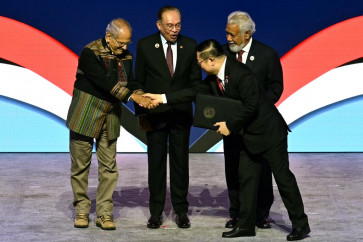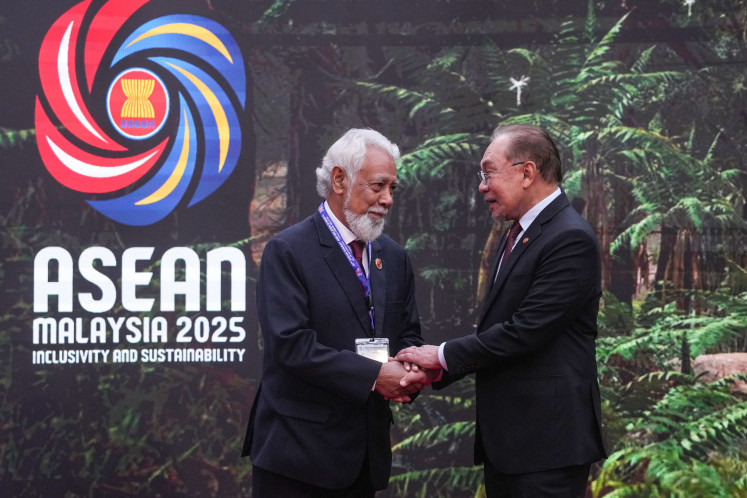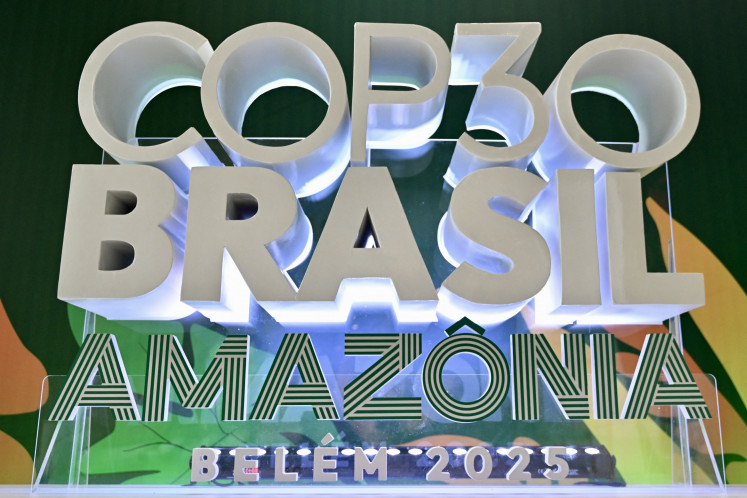Popular Reads
Top Results
Can't find what you're looking for?
View all search resultsPopular Reads
Top Results
Can't find what you're looking for?
View all search results‘A Daughter’s Memory’: A voice for the forgotten
Award-winning: Kartika Pratiwi's animation A Daughter’s Memory sheds more light on the events of 1965
Change text size
Gift Premium Articles
to Anyone
Award-winning: Kartika Pratiwi's animation A Daughter’s Memory sheds more light on the events of 1965.
After Kartika Pratiwi first read Pramoedya Ananta Toer’s literary tetralogy, she was left with many questions and deep curiosity. In particular, she wanted to find out more about Indonesia’s history, the part that had been conveniently left out during her own education.
With a master’s degree in humanities from Sanata Dharma University in Yogyakarta, Tika, as she is better known, began working as an independent researcher with a focus on the narrative discourse of the 1965 tragedy, which is perhaps the darkest chapter in the country’s history. In 2008, she founded Kotakhitam Forum.
“It is an independent organization that is dedicated to conducting research, workshops and making documentaries for social and political change, with the idea of recording the accounts of witnesses and survivors of the mass killings,” Tika said.
She became involved in producing video archives on Indonesian political history and collective memory, as well as documentaries, including Yang Bertanah Air, Tak Bertanah (2008), r.i. (2010) and Api Kartini (Kartini’s fire, 2012).
A Daughter’s Memory, which took home the awards for Best Film and Best Animation at ReelOzInd, is Tika’s latest effort on the subject.
This animated documentary-based oral history sees a woman named Svetlana tell her own story and that of her family, which is intricately linked to the civil unrest of 1965 — the year she last saw her father, was imprisoned herself and tasked with cleaning the interrogation room, which was often covered with blood stains.
“When we decided to produce A Daughter’s Memory, we wanted to make a film with a simple narrative about memory that also delivers a strong and powerful message,” Tika said.
“Discussions about memory and remembrance may not be new when we talk about films on the same topic, an account of survivors, but what makes it different is that this film is told from the perspective of a young girl — the daughter of the victim. I also think that using this hybrid documentary genre, called animated documentary, makes it different from others.”
A Daughter’s Memory is an important contribution to shedding more light on the events of 1965.
But at the same time, the film is a touching tribute to a father, the journey of a young girl who was robbed of her childhood and the empowering tale of a woman who has come to terms with her past that has irrevocably shaped her identity.
“Young people in Indonesia today mostly still don’t know what happened exactly in 1965-1966,” Tika said.
“The lack of sources, the existing social trauma and the mono-narrative history are the best reasons to answer the question about why I decided to produce this film. We believe it is important to see different perceptions and interpretations of the past through individual memory. This oral history as a testimony of Svetlana is just a small part of the alternative version against the obvious monolithic version.”
Kartika PratiwiWhen she was working on the film, Tika said she pondered about how the animated documentary could embrace digital technology in a way that could change the way memories and history were preserved.
“This film does not solely aim to leave an impression on the audience but also gives a survivor an opportunity to articulate her memories,” she said.
This was not the first time Tika received an award at the ReelOzInd short film competition and festival. Her film Arohuai, which tells the story of a West Papuan asylum seeker, won Best Film, Best Documentary and Best Collaboration in 2017.
In the same year, she led a public seminar and teachers workshop on “Holocaust, Genocide and Contemporary Challenges” as part of her engagement with the International Conference on Education and Holocaust, organized by the United States Holocaust Memorial Museum and UNESCO.
A former John Darling fellow at the Herb Feith Foundation in Melbourne, Australia, Tika completed two more fellowships earlier this year, at the Alliance of Historical Dialogue and Accountability at Columbia University in New York City and Crossing Borders by Robert Bosch Stiftung in Berlin.
“During those two fellowships, I developed my project entitled [Re]riting 1965 in the Digital Age, an interactive digital platform relaying the facts in relation to the Indonesian mass killings in 1965 through materials such as collection of stories and memories of survivors, archival documents and digital cartography,” she said.
With this project, Tika aims to embrace digital technology to change the way history is preserved.
The platform will be coupled with other relevant media and technologies, as well as a variety of online and offline engagement tools. It will be cocreated with the media, scholars, activists, educators, survivors and other networks.
She said her fellowships in the US and Germany had aligned with her goals.
“Coming from a country where even talking about the past wrongdoings of the nation is kind of taboo, these fellowships gave me a better understanding on how to present history to the public without dictating it,” she says.
“The context of the Holocaust was something that I could learn about and compare to my country’s context of genocide. It enabled me to learn how to create a space for discussion about the past.”
Tika acknowledges the number of official initiatives that aim to reexamine the violence of 1965-1966, many of which were stimulated by a spirit of reform and movement that had begun to gain momentum even before 1998, as well as later on, when pressure from outside and within the country grew to resolve the crimes against humanity committed against presumed communists in 1965 — yet the government appears unable or unwilling to follow up.
“The goal is not only to fight the stigma but also to recognize that there were wrongdoings in Indonesian history that people should know about and better understand,” Tika said.
“For me, it is important to have a real discussion and to think about how to move forward when dealing with Indonesia’s past, to deconstruct the monolithic version of history and provide memorialization to create a historical dialogue in a democratic way.” (ste)
Collective memory: The animated short centers on the story of a woman whose father was a victim of the 1965-1966 mass killings in Indonesia.— Photos courtesy of Kartika Pratiwi












